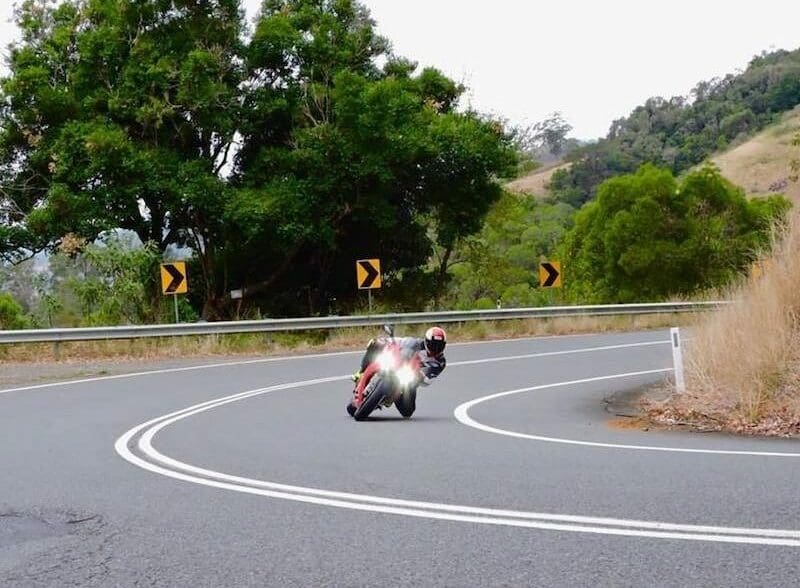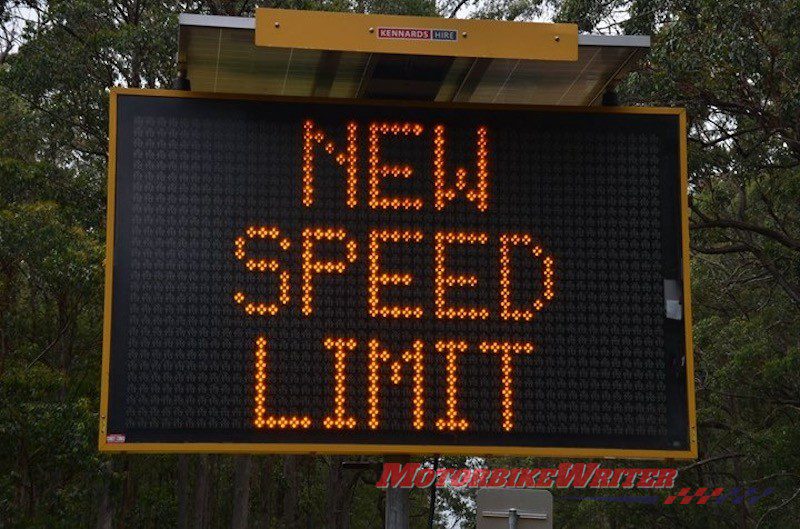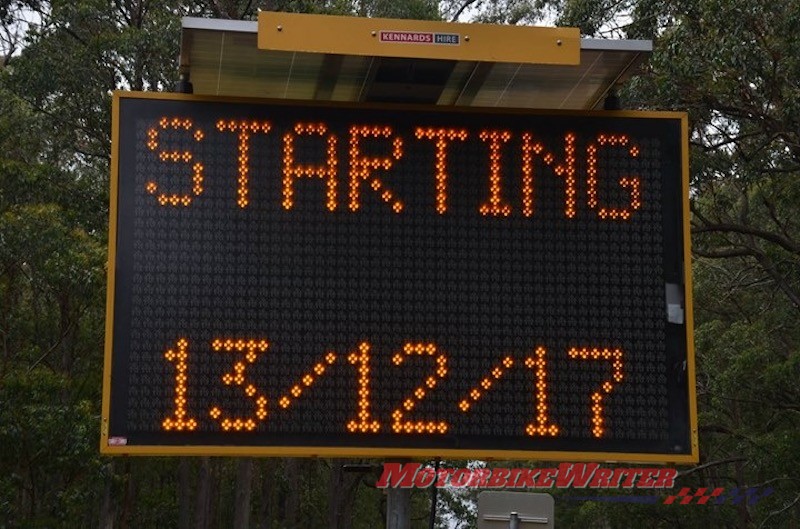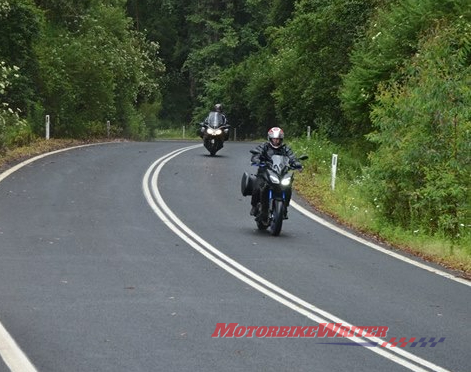A plea has been sent to NSW Ombudsman Michael Barnes to halt the speed reductions on the Oxley Highway because of deceptive crash statistics.
Motorcycle Council of NSW (MCCNSW) secretary Steve Pearce says the Roads and Maritime Services (RMS) used inaccurate crash data to justify the speed change from 100km/h to 80km/h on 44km of the mountain section.
RMS officers cited six motorcycle fatalities in the past six years as just cause for a seed reduction, but Steve says the figures are selective.
He says there have been 10 crashes in the past 18 years and that not all were related to speed.
Steve says the Oxley decision will adversely affect local businesses that rely on the motorcycle tourism trade.
The submission to the Ombudsman also includes an MCC of NSW position paper the correct use of crash statistics and calls for road safety authorities and police to implement proper road crash investigations.
(Read the full text of the submission to the Ombudsman below.)
Speed changes
The speed zone changes were to come into effect on Wednesday (December 13, 2017), but riders say there are no permanent signs yet, only electronic signs warning of the changes.
UPDATE (December 14): An RMS spokesperson says they have now begun installing 80km/h limit signs from 2.6km west of Ralfes Creek Bridge to 100m east of Seaview Road.
“Installation of the new 80km/h speed limit signs are expected to be completed in coming days, weather permitting,” they say.
Steve says the MCC of NSW submission is now in the hands of the NSW Ombudsman.
“Once they have a chance to advise their response, we will then decide our next course of action,” he says.
Steve and local rider activists have promised to consider further action to reverse the decision.
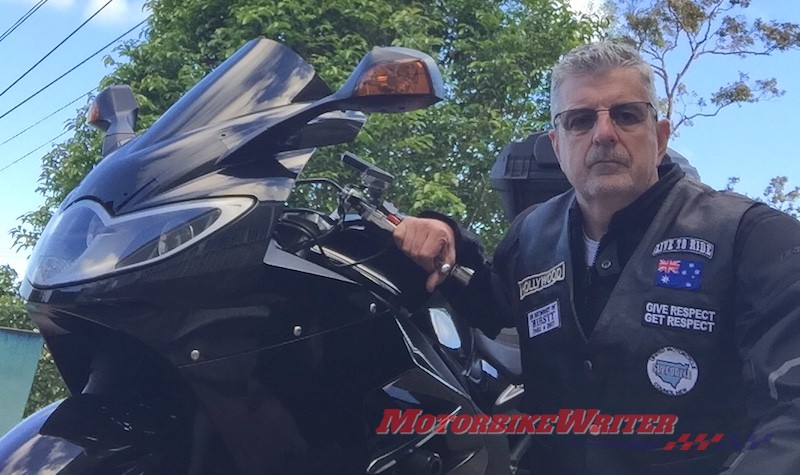
Full text of the MCC of NSW submission to the Ombudsman:
URGENT Application to Michael Barnes, NSW Ombudsman
Inaccurate Crash Data used by Roads and Motoring Services (RMS) to Reduce the Speed Limit on Oxley Highway will cause financial hardship for businesses in Wauchope and Walcha and along the Oxley Highway.
Summary:
The Motorcycle Friendly Town Committee of Wauchope and Motorcycle Council of NSW (MCCNSW) is asking that the speed limit on a 44km section of road on the Oxley Highway be returned to 100km/h as soon as possible. The reason given by the Minister for Roads, Transport and Freight, Melinda Pavey, for the reduction in speed limit from 100km/h to 80km/h is the excessive number of motorcycle fatalities over the past 6 years, all blamed on excessive speed as the main causal factor.

We can show that whatever methodology has been used to record speed as the reason for these fatalities is flawed, as at least three of these six fatalities were not the result of excessive speed.
This decision will result in financial hardship for many businesses in and around the Oxley Highway. The speed limit must be re-instated to 100km/h as soon as possible so members of the local community who have invested heavily in motorcycle tourism do not suffer financial ruin over the holiday period.
An accurate method of capturing the causation of motorcycle fatalities must also be addressed urgently so that better decisions can be made regarding speed limits, road upgrades and other safety outcomes for motorcyclists.
Background:

On Monday 27th November, the NSW Minister for Roads, Transport and Freight, Melinda Pavey, announced that the speed limit on a 44km section of the Oxley Highway would be reduced from 100km/h to 80 km/h.
The decision to reduce the speed limit was foreshadowed early in 2016. The local community responded with a petition of over 10,700 names and a protest gathering attracting over 1,000 riders, pillions and residents asking the NSW Government to review the decision. The proposed decision was clearly not acceptable to the local community.
The Oxley Highway between Wauchope and Walcha attracts motorcyclists from all over NSW and other States and from around the world. There are a number of reasons for this. The scenery is stunning, facilities are well matched to motorcycle tourism and the road is enjoyable to ride. MotoFest is an annual event, held in Wauchope in November, and attracts thousands of riders from all over NSW, Qld and Victoria.
The local Community of Wauchope and Walcha have invested a significant amount of time and capital to promote the region as Motorcycle Friendly. There are a number of businesses on the Oxley Highway, and in Walcha and Wauchope, which rely on motorcycle tourism for their financial survival. These businesses and the communities of Wauchope and Walcha will suffer financially from this decision.
The decision to reduce the speed limit on this section of the Oxley Highway was based on the RMS reporting of an unacceptable level of excessive speed related motorcycle fatalities in the past 6 years.
In fact, this paper will show that the rationale based on speed as a factor, used to justify this decision, is based on inaccurate data and is highly questionable.
Motorcycle fatalities on the Oxley Highway:
There have been 6 Motorcycle fatalities on this section of the Oxley Highway, in the last 6 years. The fatality rate actually extends to 6 motorcycle fatalities in the last 10 years (2008 to 2017) and out to 10 motorcycle fatalities in the last 18 years (2000 to 2017) – page 42 Oxley Safety Review up to 2013 then 5 deaths since then.
These fatalities have occurred on three corners. Each corner is marked as a < or equal to a 45km/h corner. However, the community has been told by Minister Pavey that all 6 fatalities in the last 6 years were speed related. In fact, we can show that at least 4 of these 6 fatalities were caused by other factors:
- March 2017: A 59y.o. female rider suffered a heart attack (aneurysm), while riding and crashed.
- A rider crashed at low speed after losing control on a section of road which had been washed down by RMS.
- A rider lost control on a low speed bend (30km/h) and was fatally injured when he contacted with the corner safety barrier.
- A rider lost control on a straight section of road and hit a RMS safety sign.
Joint Standing Committee on Road Safety (Staysafe) 2015:
In 2015, the Joint Standing Committee on Road Safety (Staysafe) held an Inquiry into Motorcycle Safety in NSW. The very first recommendation identified flaws in the quality of crash data and made 2 recommendations:
“RECOMMENDATION 1 – 8 The Committee recommends that, in order to further enhance and continuously improve the robustness of the evidence base for the development of future motorcycle safety policies and programs: 1. Transport for NSW includes ‘ongoing efforts to improve the quality of crash data’ as an action in its next three year motorcycle safety action plan, 2. NSW Police enhances its crash data collection methods”;
Neither of these recommendations have been implemented, and if they had, we believe would lead to a more accurate set of fatality data and a more realistic outcome for the communities of Wauchope and Walcha.
Conclusion:
The Motorcycle Friendly Town Committee of Wauchope and MCCNSW is asking that the speed limit on a 44km section of road on the Oxley Highway be returned to 100km/h as soon as possible, pending an independent review of fatalities on this section of road.
Furthermore, we ask that an urgent meeting be called between all stakeholders to discuss the implementation of Recommendation 1 of the 2015 Staysafe Enquiry into Motorcycle Safety.
APPENDIX
MCCNSW Position Statement: Speed used as a causal factor in motorcycle accident investigations:
NSW Road authorities claim that “speed” is the biggest killer on our roads, claiming that speed is a causal factor in 40% of crashes. The MCC does not agree with this claim as it is not substantiated by any factual/evidence-based investigative findings.
The basis of this claim is Police reports that are prepared by General Duties Police who are not trained specialist crash investigators. Such reports, whilst ensuring an accurate outline of WHAT happened in a crash, often fails to discover WHY the crash happened. Consequently little or no reliable crash cause data is gleaned from police attendance at road crashes. Police routinely do their best to work out WHAT was involved in crashes that they attend so that they may provide basic evidence of the commission of any traffic offence/s that has/have occurred in the crash. Thus the purpose and extent of any ‘investigation’ that takes place at a crash is designed to suit traffic offence prosecutions and in the case of serious traffic crashes, the possibility of criminal offences – rather than any effort to determine and/or better understand actual crash causation.
Only fatal and serious injury are attended by police with experience in criminal investigation and they may also have assistance from scientific sources but even then, such attendance, whilst ensuring an accurate outline of WHAT happened in a crash, often fails to discover WHY the crash happened.
Algorithms are then used to interrogate Police Reports to determine if ‘speed’ as a factor in the crash. These algorithms over estimate the role speed plays in crashes, in particular, motorcycle crashes.
In the United Kingdom (UK) for example, specially selected and educated police conduct road crash investigation and these police do NOT initiate prosecutions for traffic offences, as is the case in NSW. The UK crash investigation police focus on ‘causation’ as their key task. In the UK back in 1997, the British Transport Laboratory undertook a project (TRL323) to better standardize reporting of road crashes throughout the UK and following this project that thoroughly re-examined road crashes in 8 policing jurisdictions in the UK, they found that less than 8% of all road crashes involved exceeding speed limits as a causal factor. Report TRL323 clearly identified driver ‘inattention’ as the biggest causal factor in road crashes.
In the USA in 2005, the National Highway Traffic Safety Administration, in conjunction with Virginia Technical University, conducted a long-term “Naturalistic Driving Study”, involving over 42,000 thousand hours of captured in-car footage from 100 participant cars and 241 drivers. The results of this study showed that excessive speed was a causal factor in just 7% of ‘adverse incidents’ recorded. However, the study showed that almost 80% of adverse incidents involved driver inattention just prior to the incident (ie within 3 seconds). Prior to this study (in a similar mind-set to NSW Road Authorities), driver inattention was thought to have been a causal factor in around 25% of adverse traffic incidents.
“Speed” is a factor in every single road crash (ie 100%) when it comes to OUTCOME but “speed” is rarely the actual CAUSE of a road crash. Sound international research has already long established this fact. Thus the claim that speed is a factor in 40% of fatal crashes is a meaningless statement because the statement is silent on whether the factor being referred to is one of OUTCOME or CAUSE. NSW road authorities need to start providing for proper cause-driven investigations of road crashes instead of perpetuating misleading statements that have no basis in fact.
Where we want to be:
That road safety authorities to implement proper road crash investigation with the key purpose of understanding true crash causation and to cease the current inept methodology of road crash cause ‘determination’ by the application of contrived causal criteria to current road crash reporting, such criteria that do not provide evidence-based data with respect to road crash causation. Prosecute traffic offenders involved in road crashes – but even more importantly, determine the cause of the crash.
How to get there:
All road crashes are investigated by specially selected and trained police who can determine why a crash occurred
In the interim, lobby to have algorithms that determine ‘speed’ as a causal factor in motorcycle crashed changed to better reflect the crash characteristics of motorcycles.


